Enhancing Soft Skills for DevOps Engineers: Essential Non-Technical Skills to Thrive
Communication Expression and Storytelling
Non Verbal Skills
Welcome to this guide on enhancing non-verbal communication for DevOps professionals. As engineers, your ability to convey confidence, empathy, and clarity without words can transform team dynamics, improve stakeholder trust, and accelerate project outcomes.
The Importance of Non-Verbal Communication in DevOps
Research suggests that about 55% of our communication stems from body language, 38% from tone of voice, and just 7% from the words themselves. While the exact breakdown may vary, the core message is clear: mastering non-verbal cues amplifies your ideas and fosters collaboration.
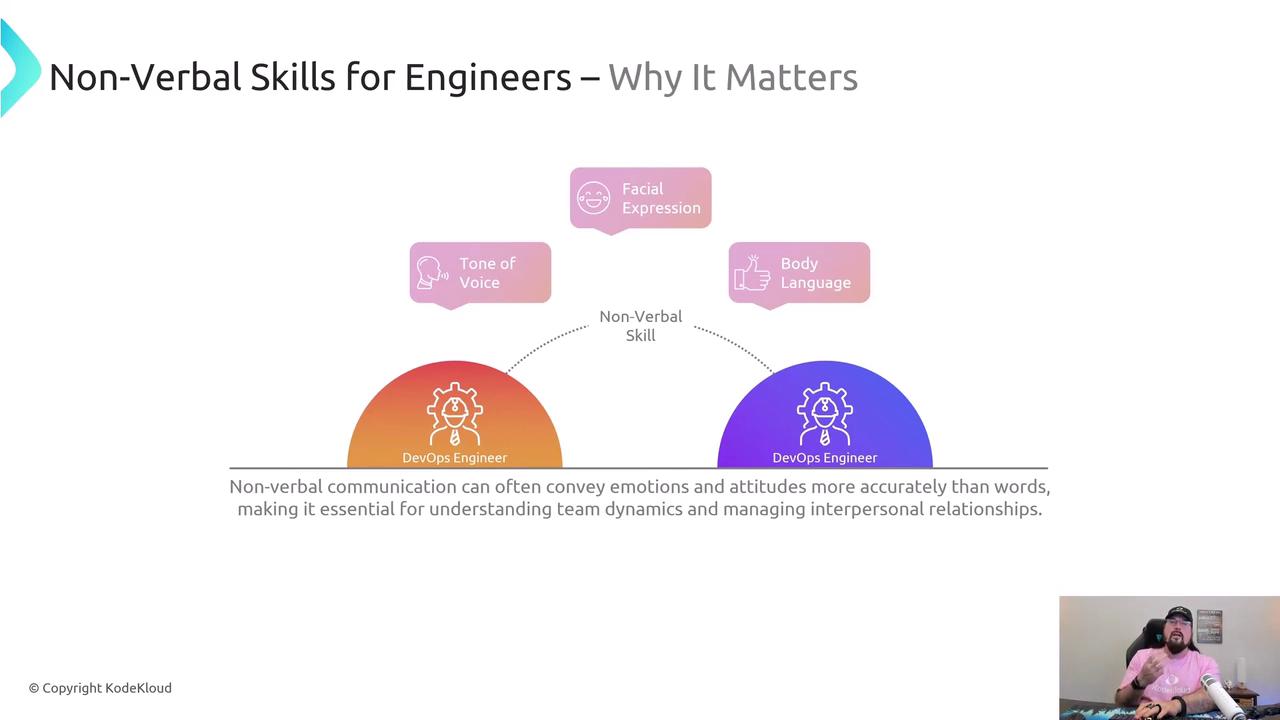
1. Body Language
Body language shapes first impressions and sustains engagement.
- Posture:
• Lean forward to show interest
• Keep shoulders relaxed and spine upright - Gesturing:
• Use open hand movements to reinforce points
• Avoid crossing arms or fidgeting - Mirroring:
• Subtly reflect the other person’s posture or expressions
• Builds rapport and trust naturally
Note
Practice in front of a mirror or record yourself to refine posture and gestures.
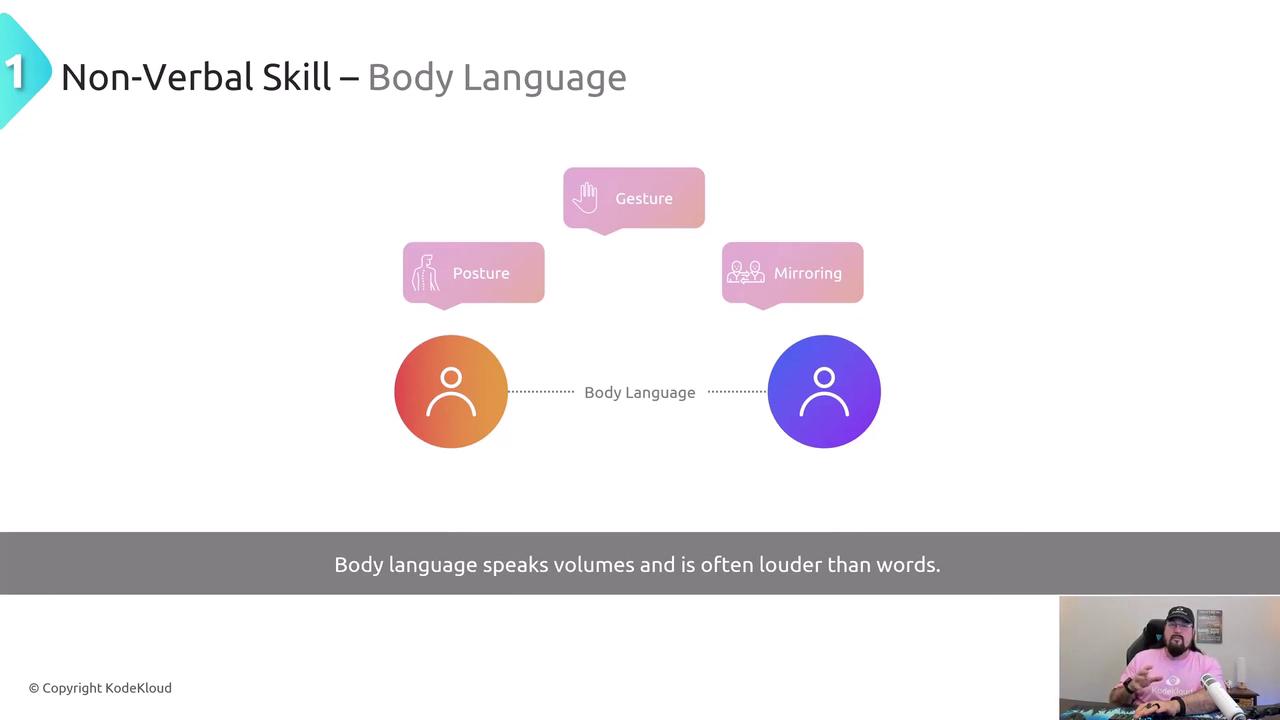
2. Tone of Voice
Your vocal tone shapes emotional context. Rotate among these styles for maximum impact:
| Tone | When to Use | Example |
|---|---|---|
| Soothing (DJ) Voice | Diffusing tension or objections | “I hear you—that’s a serious concern.” |
| Open Voice | Inviting feedback or brainstorming | “Typically, we allocate 2 weeks—what would you suggest?” |
| Boundary Voice | Setting clear limits or priorities | “I can’t dedicate more than 4 hours today.” |
| Direct/Assertive Voice | Driving decisions or delivering feedback | “Please merge this PR before noon to meet our SLA.” |
Note
Mix tones to keep conversations collaborative—avoid defaulting to assertive for every discussion.
![]()
3. Microexpressions
Microexpressions are rapid facial cues—under a second—that reveal true emotions.
- Monitor eyebrow raises, lip presses, and eye shifts
- Compare with verbal statements for inconsistencies
- Gentle follow-ups can surface hidden concerns
Note
Learning to spot microexpressions can improve negotiation and feedback sessions.
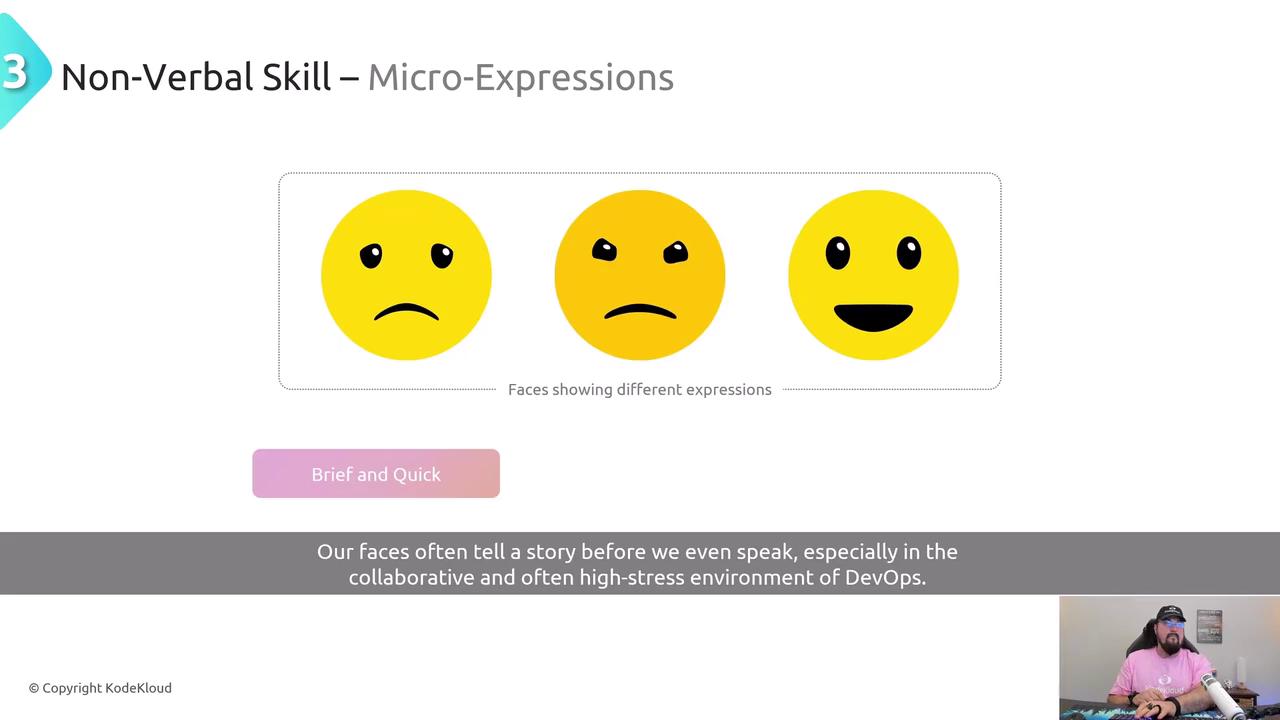
4. Eye Contact
Balance attention with comfort to build trust:
- Speaking: Maintain eye contact ~50% of the time
- Listening: Increase to ~70% to show engagement
Note
In remote meetings, keep your camera on and look at the lens to simulate direct eye contact.
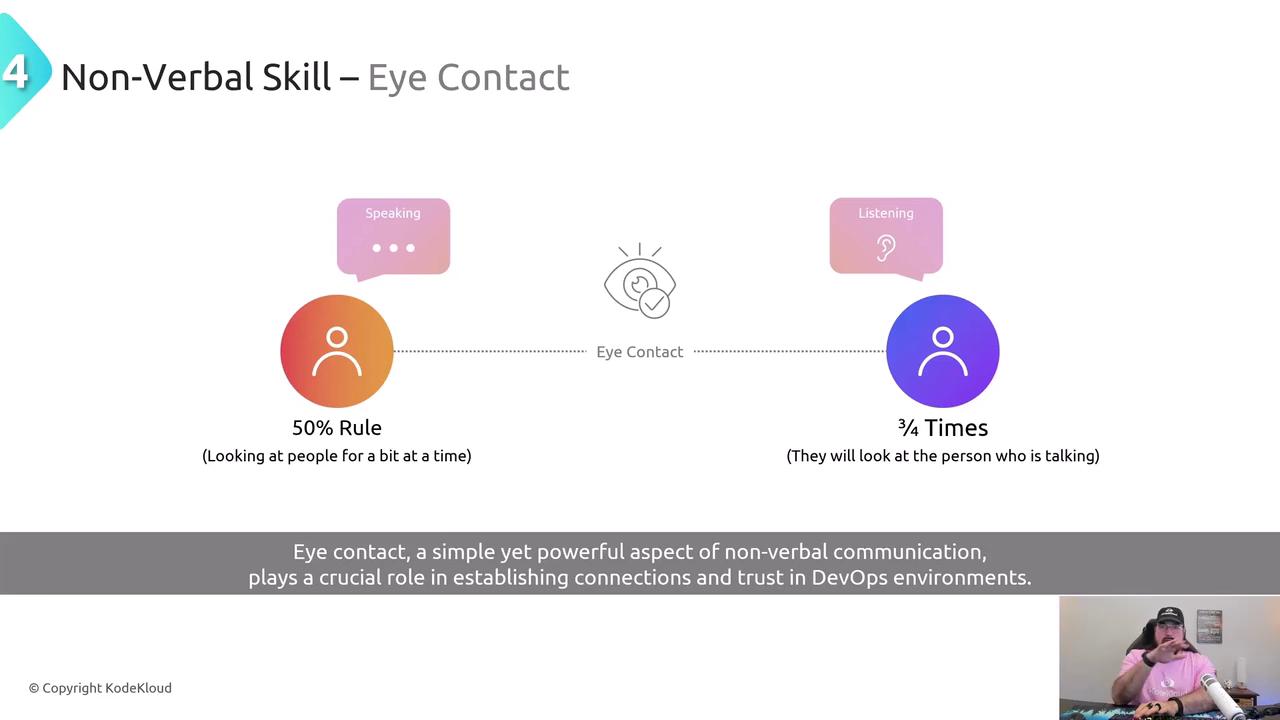
5. Personal Space Management
Respecting proximity reduces discomfort and builds psychological safety:
- High-density cultures: May stand closer (0.5–1 m)
- Low-density cultures: Prefer more distance (1–1.5 m)
- Observe cues like stepping back or lean-ins
Warning
Invading personal space can distract from your message or create tension—always adjust based on the other person’s comfort.
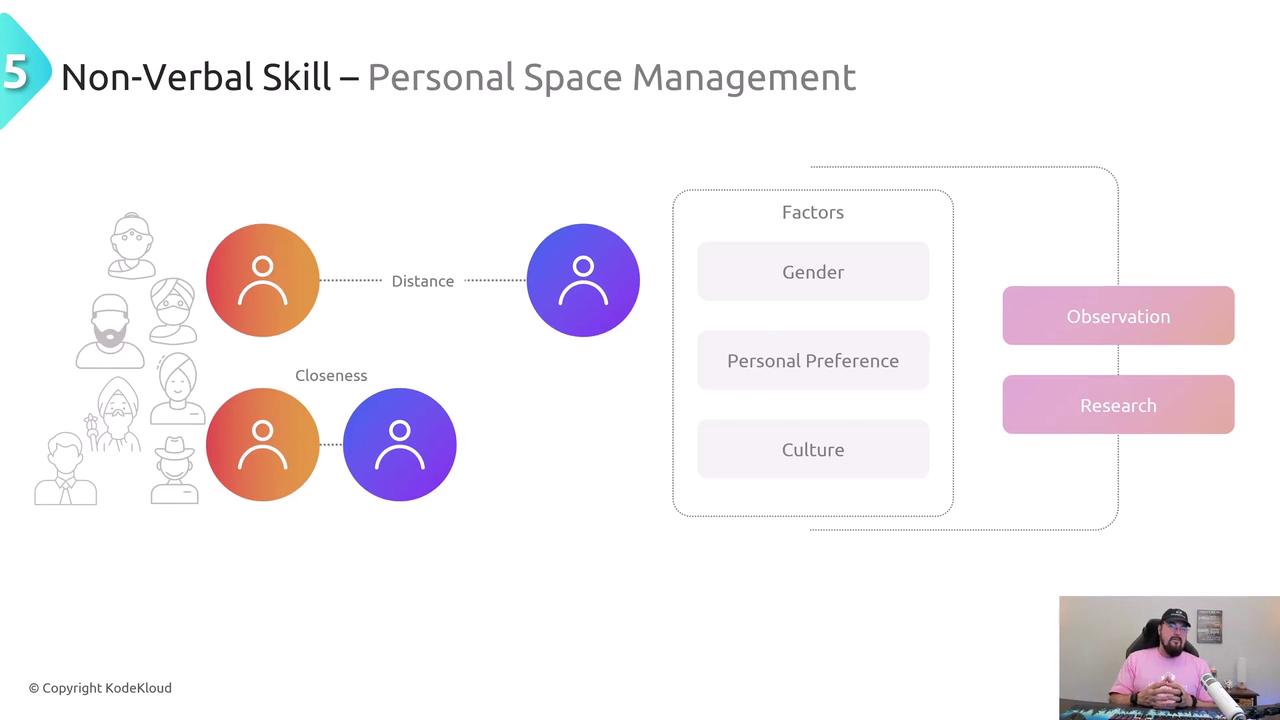
Summary of Non-Verbal Skills
| Skill | Key Action | Impact |
|---|---|---|
| Body Language | Posture, gestures, mirroring | Builds engagement and trust |
| Tone of Voice | Rotate soothing, open, boundary, direct | Shapes emotional reception |
| Microexpressions | Spot fleeting facial cues | Uncovers hidden concerns |
| Eye Contact | 50% speaking, 70% listening | Signals interest and confidence |
| Personal Space | Adjust distance by culture/comfort | Enhances psychological safety |
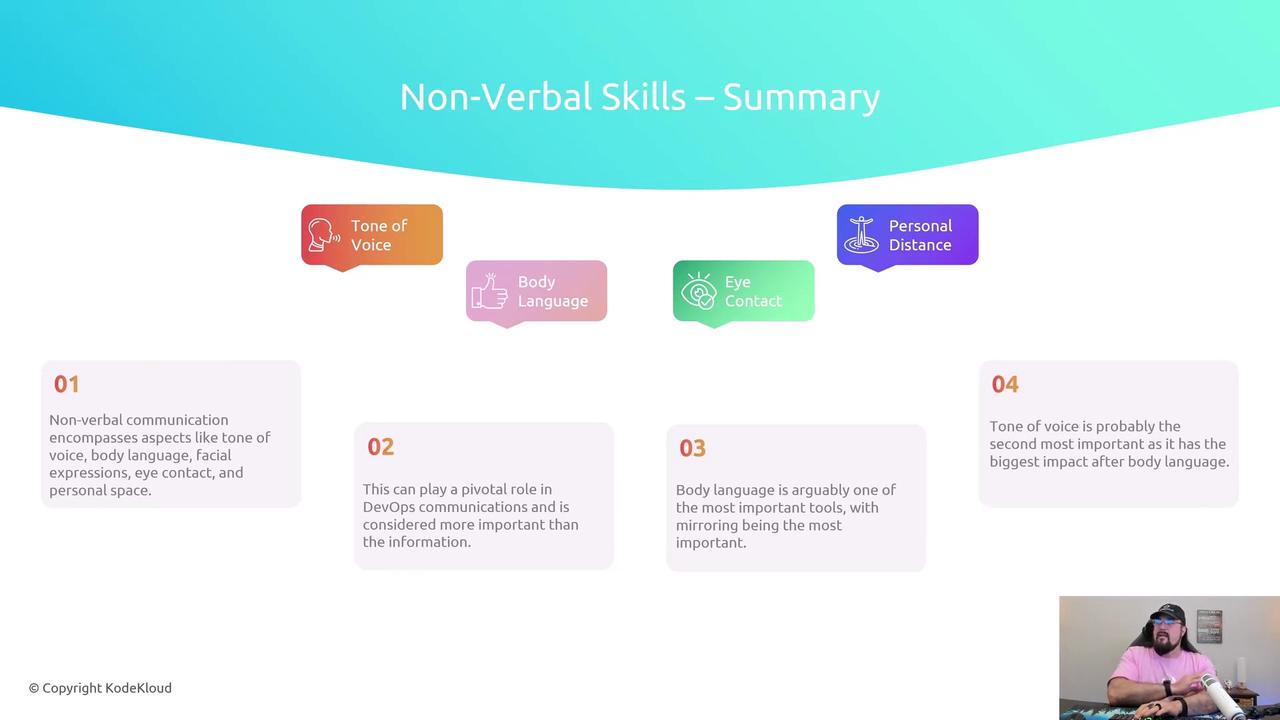
Links and References
- Never Split the Difference by Chris Voss
- Kinesics: The Study of Body Motion Communication
- Remote Meeting Best Practices
Watch Video
Watch video content